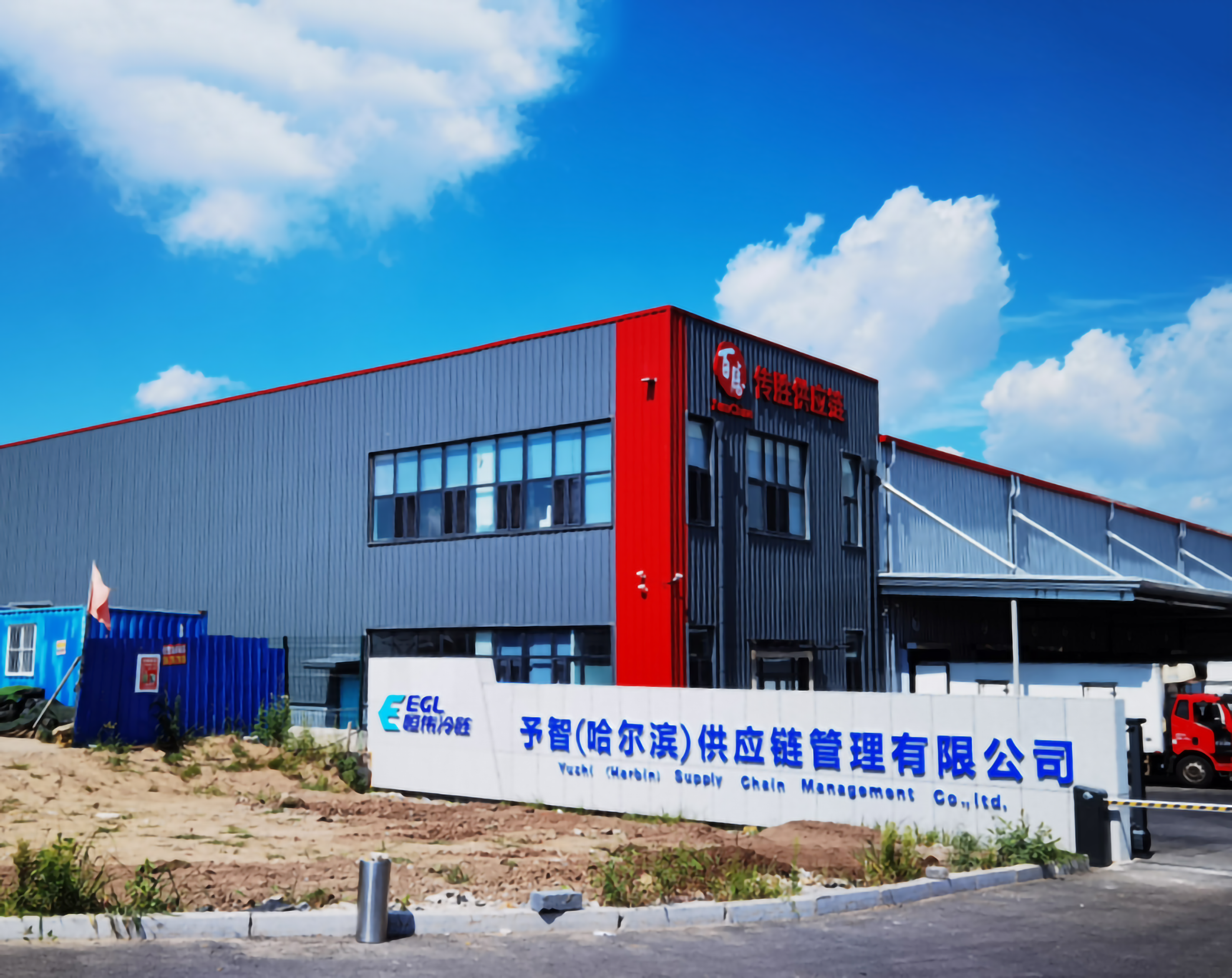Strategic Cold Storage Placement to Optimize Supply Chain Performance
Impact of regional cold storage on supply chain efficiency
Regional cold storage facilities reduce transit times by 18–32% compared to centralized models while maintaining product integrity (Ponemon 2023). This decentralized approach enables food producers and pharmaceutical suppliers to achieve 99.4% temperature compliance during regional distribution, in line with International Cold Chain Association standards.
Proximity to key markets: Reducing transit times and improving responsiveness
Locating cold rooms within 150 miles of metropolitan areas cuts last-mile delivery windows by an average of 4.7 hours. A 2023 ODW Logistics case study shows that strategic cold storage positioning near Midwestern US population centers reduced frozen food delivery failures by 41% through real-time inventory redistribution.
Cost savings through shorter, more efficient transportation routes
Regional cold storage networks lower refrigerated transportation costs by 20–25% by reducing fuel consumption (8–12% per mile), decreasing refrigerated trailer rentals (14% drop in peak season), and improving load consolidation (23% higher trailer utilization). Multi-zone facilities serving overlapping markets boost route efficiency by 30% over single-site operations using dynamic routing algorithms.
Enhancing global supply chain resilience with strategic cold room positioning
Companies operating at least three regional cold storage hubs experience 85% fewer temperature excursion incidents during disruptions (Cold Chain Resilience Report 2024). Geographic redundancy supports rapid inventory reallocation, with leading 3PL providers enabling cross-continental product redistribution within 72 hours via coordinated cold storage networks.
Optimized Cold Room Layout and Flexible Configuration for Warehousing Efficiency
Strategic cold room design directly impacts operational performance in logistics and warehousing. Facilities designed for workflow optimization achieve 18–22% faster inventory turnover than conventional layouts, according to a 2023 IWLA benchmarking study.
Designing for Maximum Throughput and Operational Accessibility
High-efficiency cold storage spaces prioritize three design elements: streamlined floor plans minimizing travel between staging, docks, and storage; vertical integration using automated retrieval systems to maximize cubic space; and material handling corridors sized for concurrent equipment movement, reducing bottlenecks by 27–33%.
Forward-thinking operations use modular racking configurations that adapt to seasonal fluctuations without sacrificing accessibility. These designs contribute to 19% shorter order fulfillment cycles and 15% lower labor costs.
Customizable Temperature Zones and Scalable Capacity for Diverse Perishables
Modern multi-compartment cold rooms support 4–7 distinct temperature bands (-22°F to 55°F), allowing simultaneous storage of frozen goods, chilled produce, and pharmaceuticals. This is achieved through interlocking insulation panels enabling ±1.5°F accuracy, mobile partitions reconfigurable in under four hours, and multi-duct ventilation maintaining 85–95% relative humidity per product type.
This flexibility allows scalable capacity adjustments during demand surges while avoiding energy waste—particularly important given that 35% of cold storage energy costs stem from refrigerating underutilized zones (Refrigeration Research 2022).
Automation and Smart Technology in Cold Storage Operations
Modern logistics and warehousing cold room operations leverage automation to reduce temperature deviations by 72% compared to manual systems (Cold Chain Institute 2023), significantly enhancing product integrity across sensitive sectors.

AI-Driven Automation for Precise Temperature Control and System Reliability
Machine learning algorithms predict maintenance needs, cutting system downtime by 33% in full deployments. When combined with automated storage systems like AS/RS (Automated Storage Systems), facilities achieve 99.8% temperature consistency. These systems adjust compressor cycles based on real-time product heat signatures rather than fixed schedules, improving both precision and efficiency.
Real-Time Monitoring Systems for Seamless Logistics Tracking
IoT sensors deliver ±0.1°C accuracy and transmit data via mesh networks with 99.99% reliability. This granular visibility enables dynamic routing adjustments, with integrated monitoring users reporting 22% fewer product rejections during inspections (Global Cold Chain Report 2024).
Selecting Refrigeration Technology Based on Scale and Product Requirements
Modular cascade systems serve operations ranging from 200m³ micro-fulfillment centers to 100,000m³ regional hubs. Hybrid CO₂/NH₃ refrigerants reduce energy use by 18% versus traditional options, while variable-speed compressors cut startup energy spikes by 41% (Energy-Efficient Cooling Solutions).
Case Study: Automated Cold Room Reduces Error Rates by 40% in European Hub
A German pharmaceutical distributor saved 2.1M annually after deploying pallet-scanning robots and multi-spectrum temperature mapping. The system’s dual-path redundancy preserved €4.7M in inventory during 17-hour power outages, maintaining product stability throughout grid failures.
Energy-Efficient and Sustainable Cold Room Design
Latest Trends in Sustainable Cold Storage Technology
Cold storage facilities going green are now pairing solar power with intelligent management systems to cut down on their carbon footprint. Recent research from 2024 looked at around 120 different sites and discovered something interesting when they combined phase change materials with AI that predicts energy needs. These setups saved between 18 and 22 percent in energy costs compared to what we typically see in older facilities. The latest modular cold storage units equipped with those fancy vacuum insulated panels leak about 30% less energy than the standard polyurethane options according to a study published last year by Material Efficiency researchers. This makes maintaining consistent temperatures throughout supply chains much easier for companies dealing with perishable goods.
High-Performance Insulation Materials to Minimize Energy Consumption
Aerogel-based panels—40% thinner than standard insulation—deliver equivalent thermal resistance while freeing up 12–15% more storage space. Triple-glazed doors with magnetic seals and automatic closure reduce cold air loss by 27% during high-frequency access, according to refrigeration engineering data (Cold Chain Tech Review 2023).
Balancing Upfront Investment With Long-Term Energy Savings
Sustainable design does cost about 15 to 20 percent more upfront, but most companies see their money back within a year from energy savings according to the Logistics Sustainability Report for 2023. Take thermal energy storage tanks for example these can cut down on peak electricity usage by around 35%. And don't forget LED lights either they help reduce the workload on heating ventilation systems by roughly 18%. All these improvements mean energy efficient cold storage facilities are becoming real game changers for logistics operations today.
Integration of Cold Rooms with Logistics Networks and Last-Mile Delivery
Seamless Handoff Between Cold Storage and Last-Mile Refrigerated Transport
Keeping temperatures stable throughout the entire cold chain from warehouse to delivery truck remains essential for food safety. Modern monitoring systems now link cold storage areas directly with refrigerated trucks, while those smart docking stations equipped with internet connectivity cut down on temperature fluctuations by around 32% when loading goods according to recent research from Food Logistics in 2024. Working closely with third-party logistics companies helps get those chilled trucks ready just before they need them at the warehouse, so products don't sit exposed to warm air for long periods. Industry data shows these connected systems actually slash food waste rates by nearly 20% over traditional methods where people had to manually check temperatures instead.
Urban Micro-Fulfillment Centers: The Rise of Integrated Cold Storage in Cities
Compact cold rooms embedded in urban micro-fulfillment hubs have slashed average perishable delivery times from 8 hours to 90 minutes in major metro areas, per a 2023 urban logistics analysis. Key benefits include:
- Proximity optimization: 85% of customers reached within a 5-mile radius
- Energy-efficient design: Shared refrigeration systems reduce kW/h costs by 40%
- Multi-tenant flexibility: Partitioned zones accommodate both pharmaceuticals and groceries
Repurposed city warehouses now handle 23% of perishable e-commerce orders, reducing dependence on distant mega-hubs.
Aligning Cold Room Design With Multimodal Transportation Strategies
Next-generation cold storage facilities feature standardized loading docks compatible with rail, truck, and air cargo containers. Critical design considerations include:
| Transport Mode | Temperature Stability Window | Loading System Requirements |
|---|---|---|
| Refrigerated trucks | ±1°C | Rapid-seal door systems |
| Air freight containers | ±0.5°C | Pressurized transition chambers |
| Intermodal rail | ±2°C | Vibration-dampened shelving |
This interoperability reduces cross-docking times by up to 55% while maintaining USDA compliance, according to 2024 (Cold Chain) Logistics Association benchmarks. Facilities near major transport corridors report 31% faster order fulfillment than standalone sites.
FAQ
-
What are the benefits of regional cold storage facilities compared to centralized models?
Regional cold storage facilities reduce transit times by 18-32% and maintain product integrity during transportation, which leads to improved efficiency and temperature compliance. -
How does strategic cold storage positioning near key markets improve responsiveness?
By locating cold storage closer to metropolitan areas, last-mile delivery windows can be cut by an average of 4.7 hours, reducing delivery failures and improving inventory responsiveness. -
What role does automation play in cold storage operations?
Automation reduces temperature deviations by 72%, enhances product integrity, and improves system reliability by predicting maintenance needs and adjusting cycles based on real-time data. -
How can cold storage facilities become more energy-efficient?
Utilizing sustainable technology such as solar power, AI prediction systems, aerogel insulation panels, and efficient lighting can drastically cut energy consumption and reduce carbon footprint. -
What is the impact of urban micro-fulfillment centers?
These centers decrease delivery times dramatically and ensure proximity to major customer bases, resulting in lower costs and increased efficiency.
Table of Contents
- Strategic Cold Storage Placement to Optimize Supply Chain Performance
- Optimized Cold Room Layout and Flexible Configuration for Warehousing Efficiency
- Automation and Smart Technology in Cold Storage Operations
- Energy-Efficient and Sustainable Cold Room Design
- Integration of Cold Rooms with Logistics Networks and Last-Mile Delivery

